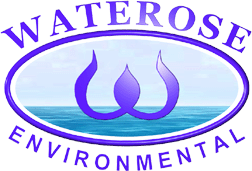 | ||||||
| Articles | Projects | Resume | Cartoons | Windsurfing | Paintings | Album |
Sustainable Development Series:
The World's Water Supply - Is there enough?

by Waterose
Earth orbits our sun in space amongst millions of other suns and planets that are devoid of life as we know it. What makes Earth so special? Water, and lots of it. Water has special physical properties that make life possible on Earth; without water we cannot not exist. The real question is do we have enough of the right kind of water? How long will it last? What do we do if we run out? How do we conserve water quality? These are the questions we face today as a species and as custodians of all life on Earth.
The increasing scarcity of fresh water is a very real problem on a global scale that requires a global solution. Representatives from 178 countries around the globe convened at the Earth Summit 1992 in Rio de Janeiro to discuss sustainable development of global resources (Rogers, 1993). There were several significant international documents generated by Earth Summit 1992 (ibid.). The Rio Declaration sets forth 27 principles for humankind to live in harmony with the natural systems of Earth (ibid.). The Agenda 21 document sets forth the plan of action to achieve sustainable development to restore equilibrium to Earth’s natural systems (ibid.). The objectives of Chapter 18 of Agenda 21 are to "satisfy the freshwater needs of all countries for their sustainable development" (Agenda 21, 1992).
Water is ubiquitous; it is found in every phase in the atmosphere, hydrosphere, and geosphere (Sigmund, 1996). Water has a high specific heat capacity that moderates temperatures on the Earth’s surface by transporting solar energy (ibid.). Water solid has a lower density than water liquid that protects aquatic habitats and enables aquatic ecosystems to exist (ibid.). Water liquid is a highly polar solvent that dissolves essential nutrients and trace elements that are essential to life (ibid.). Water constitutes 65% of our body weight (Miller, 1994) and it is necessary for our physiological processes.
Water encompasses 71% of the Earth’s surface (Miller, 1994). Of this, 97% is salt water and 3% is fresh water, including water in ice caps and glaciers (ibid.). Only .003% of the Earth’s water is available for anthropogenic use; this water is accessible from lakes, rivers, water vapour, soil moisture, and groundwater (ibid.). Driven by solar energy, the hydrologic cycle collects, purifies, and recycles this minute fraction of water in different phases around the Earth (ibid.).
The global water budget, or distribution of water on the global scale by natural weather processes, is inequitable. Some countries, such as India, experience 90% of their annual precipitation during the monsoons which causes floods; "In the 1970’s floods killed more than 4,700 people per year and caused tens of billions of dollars in property damage...flood losses doubled in the 1980’s" (ibid.). Conversely arid countries, such as Africa, experience long periods of drought; "Since the 1970’s drought has killed more than 24,000 people per year" (ibid.). The impact of global warming exacerbates the inequities between areas of high precipitation and areas of drought creating an imbalanced global water budget. Agenda 21 proposes solutions to these problems by mobilisation of water resources, flood and drought management, and modelling of environmental impact assessments (Agenda 21, 1992).
The complexities of water processes, from the micro-scale to the macro-scale, are due to the linkages between the hydrologic cycle, the spheres and the ecosystems. Anthropogenic influences alter the natural equilibrium of the closed system of the Earth by water withdrawal, consumption, and degradation. The consequence is a decrease of available fresh water resources.
Population growth and economic development are two significant factors that stress the Earth’s natural capacity to rejuvenate an adequate amount of fresh water to meet global needs. Anthropogenic needs include potable drinking water, sanitation facilities, agriculture, and economic growth.
The most basic need for potable drinking water consumes approximately 6% of the global fresh water supply (Agenda 21, 1992). This water is obtained from surface waters or from underground aquifers, which are depleted as water is withdrawn and consumed (Miller, 1994). The less developed countries experience "more than 15 million deaths annually due to unsanitary water conditions which transmit diseases including cholera, typhoid fever, and amoebic dysentery" (Atlas, 1998). Conversely, the developed countries have the infrastructure in place to ensure safe potable water and sanitary conditions; however, due to environmental degradation and groundwater pollution, developed countries also experience fatalities from waterborne diseases (ibid.). This trend is increasing (ibid.).
There are several ways to increase the supply of fresh water. Agenda 21 proposes alternatives including "seawater de-salination, artificial groundwater recharge, use of marginal-quality water, waste-water reuse and water recycling" (Agenda 21, 1992). Other solutions include reservoir construction, watershed transfers, and iceberg harvests (Miller, 1994). A key solution to increasing the supply of fresh water is to restore environmentally damaged areas, such as the remediation of the Great Lakes of Canada and United States, and to cease activities that cause damage (ibid.). Two primary contributors to water pollution include industrial chemical pollution (Atlas, 1998) and industrial effluent and sewage. The voluntary approach did not deter industry from degrading watersheds, hence the command and control approach dominates in the developed countries; this forces industry to take some responsibility for pollution prevention and for remedial action. The next step is to implement international agreements such as the Agenda 21 to facilitate the global responsibility to meet global needs for water.
The need for water used for agricultural irrigation consumes approximately 70-80% of the global fresh water supply (Agenda 21, 1992). Traditional irrigation methods, that were developed when fresh water appeared to be unlimited in supply, waste almost two thirds of the water consumed (Miller, 1994). Fresh water loss is due to evaporation, deep percolation, and runoff (ibid.). In addition, water quality is degraded by salinization and pollution by the application of fertilisers and pesticides that enter the water table and contaminate local well water in the aquifer. Agenda 21 proposes improved water-use efficiency, waste reduction and water saving technology to reduce the amount of water consumed for irrigation and the environmental degradation caused by irrigation (Agenda 21, 1992). Crop farmers can use more efficient irrigation systems to reduce water wastage and practice organic farming to reduce contamination (Miller, 1994). Organic farming techniques require only a quarter of the amount of water traditionally used, yet produce much higher yields of food per hectare (ibid.). Other forms of food production require fresh water. Coupled with agriculture, water is needed to raise livestock and provide habitat for inland fisheries; livestock and fish are high sources of protein. Destruction of fish habitat is a consequence of pollution and economic development caused by urban expansion, forestry and industry.
The need for water used for industry consumes approximately 20% of the global fresh water supply (Agenda 21, 1992). Industrial processes include manufacturing and generation of electricity. Industrial processes can use recycled water or be designed to use less water (Miller, 1994). For example, manufacturing aluminum from recycled ores consumes 97% less water than using virgin ores (ibid.). More and more, there are increasing alternatives to hydro-electric energy that causes significant damage to the environment. Such examples include the use of wind energy technology in Denmark and California that has decreased the consumption of hydro-electric generated energy (Olivecrona, 1995). Agenda 21 proposes application of the polluter pays principle with an emphasis on reduced discharges at point source locations and introduction of the precautionary approach by means of impact assessments (Agenda 21, 1992).
An indirect consumer of water is deforestation for urban expansion and economic development. There is a direct linkage between forests and the behaviour of water into the ground. Forests function like sponges by absorbing rain water and releasing it slowly into the aquifer. Clear-cut logging removes forests and causes increased run off that accelerates erosion, and causes siltation of freshwater streams, rivers and lakes. Urbanisation not only removes vegetation, but also seals the ground with concrete and pavement. Consequently, water is forced to run off in specific channels at an increased velocity at specific points causing erosion and environmental degradation during peak flow periods. Agenda 21 proposes that the integrity of watershed forest cover be protected and that urban development should be sustainable (Agenda 21, 1992). Other solutions include selective logging or using alternative fibre sources. Urban development should include adequate greenways that function as buffer zones that work in combination with the urban water system infrastructures. Another solution to reduce water consumption in urban regions is to charge consumers for the quantity of water consumed. A pilot project in Boulder, Colorado reduced water consumption by one-third by using water meters and a user pays scheme (Miller, 1994).
Historically water has been treated as a free resource that everyone is entitled to use. Consequently, water users liberally consume water and are not held accountable for direct or indirect contamination of this resource. As supplies of fresh water become increasingly scarce, the value of water is increasing to the point that an economic value needs to be applied to the quantity and quality of water consumed. In a free economy market, this may be the force with enough impetus to force sustainable economic development. Development is linked to environmental degradation and the health of ecosystems and freshwater systems on a global scale.
Globally, we must protect all water on Earth for our survival and for the survival of future generations; generations that will inhabit our beautiful planet that orbits our sun in space amongst billions of other spheres devoid of life. Is this our future? At this time, we have more questions than answers and we are only beginning to understand the complex and delicate linkages that hold the Earth’s ecosystems, and life as we know it, in equilibrium.
References:
Miller, G.T. 1994. Sustaining the Earth: An Integrated Approach. Wadsworth Publishing, Belmont, Ca. 360 pp.
Olivecrona, C. 1995. "Wind Energy in Denmark" in Green Budget Reform. Ed. by R.Gale. Earthscan, London. pp. 55-67.
Rogers, A. 1993. The Earth Summit: A Planetary Reckoning. Global View, Los Angeles, Ca. 351 pp.
Sigmund, C. 1996. Pristine Waters: Examining the Chemistry of Streams, Lakes, and Rivers. Langara Press, Vancouver. B.C. 147 pp.
United Nations. 1992. Agenda 21. Chapter 18. Protection of the quality and supply of freshwater resources: Application of integrated approaches to the development, management and use of water resources. pp. 166-185.
Return to Index of Environmental Articles

 email Waterose
email Waterose
Please Sign My Guestbook
Please View My Guestbook

| Articles | Projects | Resume | Cartoons | Windsurfing | Paintings | Album |
 | ||||||